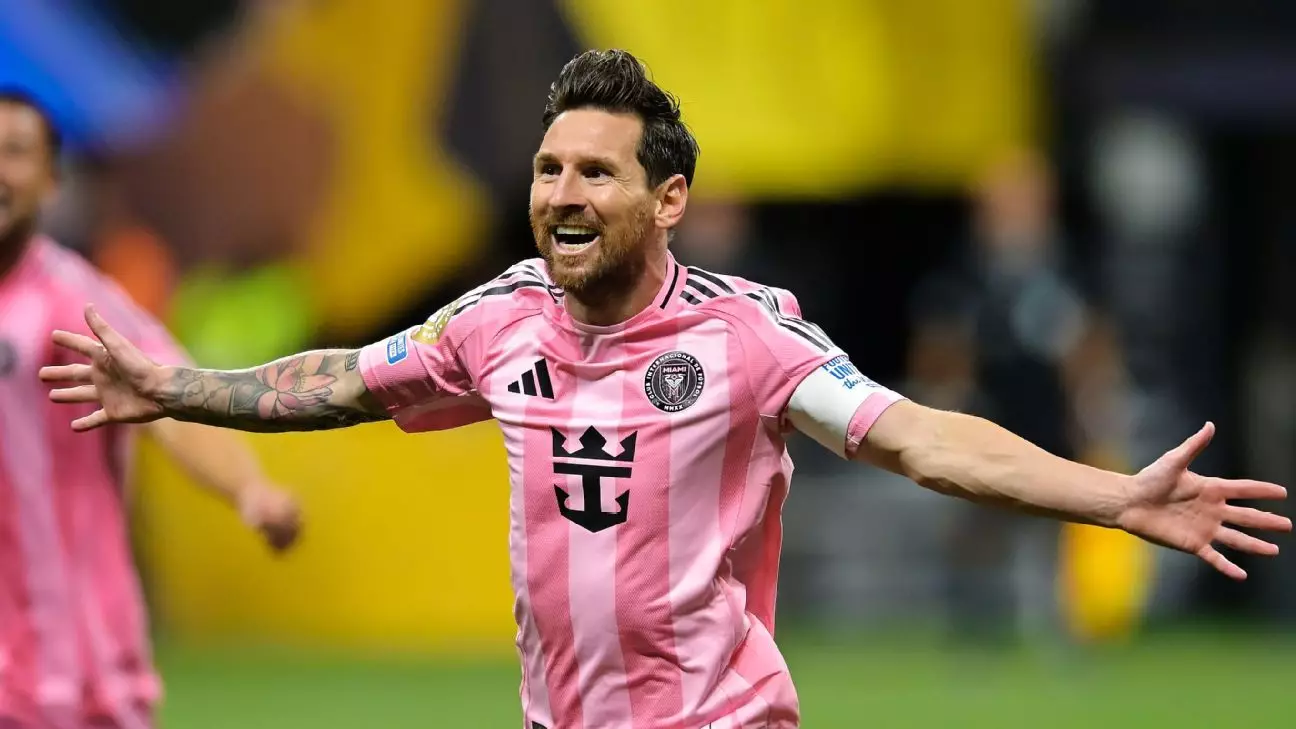Lionel Messi continues to dominate Major League Soccer (MLS) not just on the pitch but also in the financial realm. For the second consecutive year, he claims the title of the league’s highest-paid player, with an astonishing guaranteed compensation of $20.45 million. This figure, drawn from data released by the MLS Players Association, is a testament to Messi’s extraordinary influence in elevating both the profile and profitability of soccer in the United States. Yet, it represents only a segment of Messi’s overall earning potential, which includes lucrative endorsement deals and revenue-sharing agreements, particularly with giants like Adidas and Apple.
Messi’s two-and-a-half-year contract with Inter Miami is estimated to net him up to a staggering $150 million, demonstrating how Major League Soccer is evolving into a lucrative platform even for the world’s elite athletes. His presence not only draws seasoned fans but also captivates a young, diverse audience, making him an essential asset for the league’s growth trajectory.
A Growing Talent Pool in MLS
Following Messi are other notable players, such as Lorenzo Insigne of Toronto FC, who is second in salary at $15.44 million, and Sergio Busquets, Messi’s teammate, with a respectable $8.5 million. This raise in player compensation reflects a growing trend within the league, as more talented athletes seek opportunities in MLS. Notably, players like Miguel Almirón and Hirving “Chucky” Lozano are also earning significant salaries, showcasing a wider distribution of financial power within the league.
However, it’s essential to analyze how these figures correlate with the overall landscape of soccer in the U.S. For too long, American soccer was viewed as a tier below European leagues, but such compensation structures are beginning to shift that narrative. The upward trend in guaranteed compensation—from an average of $649,199, up 9.22% in a year—coupled with the rise of skilled players, denotes that the league is maturing, attracting raw talent and driving up competition levels.
The Inter Miami Effect
Inter Miami’s salary expenditure stands strikingly high at $46.84 million—a number that outpaces all but two other teams combined. This staggering figure is a clear sign of the club’s ambition and financial capability, particularly since it exceeds the record they set just a year ago. It is astonishing to watch a single franchise reshape market expectations; this isn’t merely a reflection of Messi’s arrival, but also a shift in how teams are willing to invest in their squads.
As we delve into the figures, it’s evident that other teams like Toronto FC and Atlanta United aim to keep up, but the disparity is palpable. Toronto’s $34.15 million and Atlanta’s $27.63 million are eclipsed by Miami’s spending, indicating that while the league is growing, there is still a significant gap between franchises. This prompts essential questions about sustainability and competitiveness, as the financial model of MLS becomes reliant on a few star players and well-funded teams.
The Future of MLS and Increasing Salaries
While the focus on the league’s wealth and salaries is fascinating, it is equally important to consider the broader implications of this model. As MLS operates under a Collective Bargaining Agreement that extends through the 2027 season, the pressure to balance team salaries, player development, and financial viability will intensify. The reported increases in median salaries to $339,876, and the rise of 131 players earning over $1 million, exemplify a burgeoning market that prioritizes compensating talent.
Additionally, other teams, such as the CF Montréal, have a stark contrast in spending, with a mere $11.99 million committed. This highlights challenges within the league—not only does it create an imbalance among teams, but it also raises issues about talent retention and team competitiveness. While investing in superstar players attracts attention and increases ticket sales, it risks alienating smaller franchises that lack the resources to field competitive teams.
As MLS evolves, the presence of stars like Messi symbolically captures the league’s ambitions and potential. The financial landscape is shifting dramatically, and with it comes the responsibility of ensuring that the sport flourishes across all levels, promoting sustainability and competitiveness for years to come.

